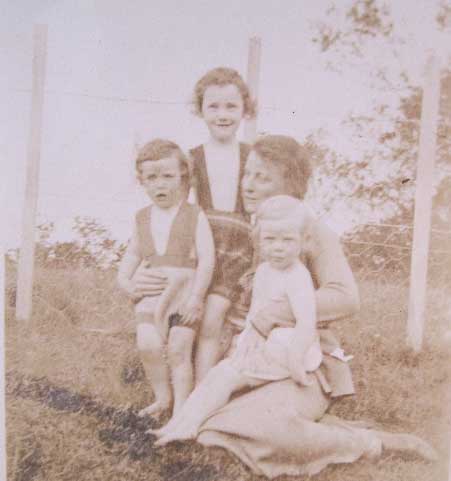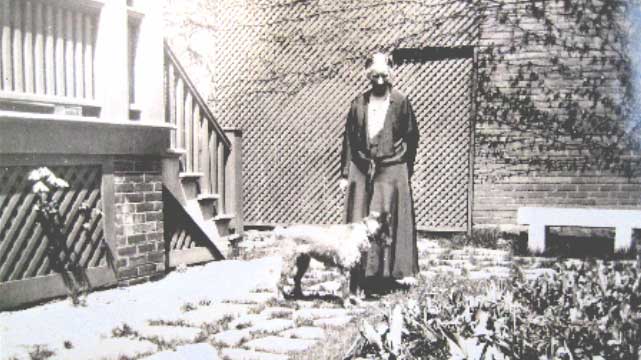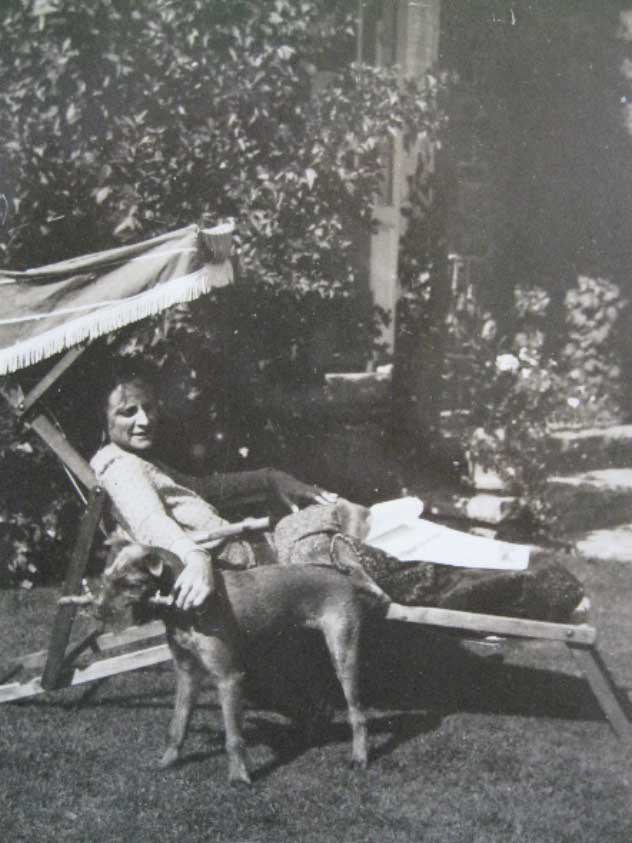13 : A life full of generosity, hospitality, and love of family and friends
Barbara's achievements in Canada have been highlighted above. She put all her energy and much of her financial
resources into the Mothercraft project. Over the years she travelled a great deal, mainly in relation to
Mothercraft. But she never stopped being a New Zealander.
Niece Barbara Lovatt recalls:
"Our Aunt regularly sent us beautiful clothes, books and artifacts from her travels in
various countries."
And another niece Anne Russell remembers:
"Over the years exciting Canadian parcels would arrive: Children's clothing; a sewing
set in a birch bark box perfumed with sweet grass and decorated with Indian beadwork; Books - 'The Red Man's
Wonder Book' (Indian folk stories), 'Sajo and her Beaver Friends' by Grey Owl', a beautifully illustrated edition
of 'Chaucer's Canterbury Tales' and Hurlbertt's 'Story of The Bible' - all treasured."
She made a number of trips back home combining contact with members of the New Zealand Plunket Society and visits
to family in Featherston and elsewhere.
The first of these journeys occurred in September 1932. She rented out 119 St George St1 and spent three months
in New Zealand, arriving in Auckland on the R.M.S. Aorangi on 6 October.2
Whilst in Auckland she spent time with her sister Mary (Mollie) and husband Alan Russell and their daughter
Anne.3 Anne Russell recalls:
"My earliest memory of Tot is being taken aboard R.M.S. Aorangi when she arrived in
the early 1930s. She stayed with us on our farm at Huia. This is now part of Auckland's Centennial Park.
The front boundary was Manakau Harbour and the Waitakari Ranges the rear. I remember her enthusiastically
scrabbling in the sand for cockles - "Oh boy, oh boy!" Tot taught me to knit and to make my bed. We went to
meet Lesley Grainger who painted, after the manner of May Gibb, furniture for children. For me in Kauri a Queen
Anne style dressing table, a large play box and small chair."
 Later during that trip to New Zealand, Tot spent time with her mother and the Robbins family at Poi Poi in
Featherston. Isabella Robbins was Tot's sister. Her children were Betty and twins Barbara and Margaret who at
that time were all recovering from whooping cough.4
Later during that trip to New Zealand, Tot spent time with her mother and the Robbins family at Poi Poi in
Featherston. Isabella Robbins was Tot's sister. Her children were Betty and twins Barbara and Margaret who at
that time were all recovering from whooping cough.4
Aunt Tot with Betty, Barbara and Margaret Robbins, Toi Toi 1932
Barbara returned to Canada on the R.M.S. Aorangi, arriving in Victoria BC on 28 December.5
She offered warm hospitality to many New Zealanders who visited Toronto. Some of these visitors were family who
stayed with Tot whilst there. Her mother Ann Mackenzie and sister Kate (Catherine) stayed with her at Auldearn in the
1930s.6

Ann Mackenzie at Auldearn
During World War Two she entertained, and opened her home to young New Zealand airmen training in Ontario.7
Tot revisited New Zealand in 1935 and this would be the last time that she saw her mother Annie who died in
February 1936. The next trip home was in 1946 when she also spent around three weeks in Australia.
She made one last trip to New Zealand in October 1952 and stayed for 20 weeks before returning to Ainslie Hill
in March 1953.8

Tot relaxing with her dog at Auldearn
Niece Anne Russell spent more than a year in Toronto 1949 - 1951. She arrived in June 1949 and after several months began training
as a Well-Baby Nurse at Mothercraft in Toronto. Anne would remain in Canada until May 1951.9
At Tot's invitation nephew Colin Mackenzie came to Ainslie Hill in 1953 to help with running the farm and stayed for 20 years.
He inherited the farm when Tot died in 1959.10
In 1955 nieces Barbara and Margaret Robbins spent time with Tot at Ainslie Hill also.11
Tot also maintained an interest in broader New Zealand issues. On 30 July 1938 she was prompted to write to the
Toronto Star:
To the Editor of The Star.
Sir: In the issue of The Daily Star for July 25 you carried an editorial "New Zealand's 'New Deal' "
Having been raised on a New Zealand sheep farm I would like to correct an error.
In speaking of the advanced legislation in New Zealand you say, "For New Zealanders this is not a brand new social
plan, but an extension of policies evolved by former Labor governments." I would like to point out that this
is the first Labor government that New Zealand has had, and that the governments that passed most of this
legislation were former Liberal and Conservative governments.
In 1912 the 8-hour day was passed and by 1914 the hospital training schools throughout New Zealand were all
doing 8-hour duty. Superannuation for nurses went through in 1925 or thereabouts. Old age pensions have been
in for many years. New Zealand was the first country in the world with women suffrage, this being given to
women unasked. The arbitration board has been in existence some years, and it was not the Labor government
that was responsible for this.
Apart from New Zealand having the lowest infant mortality rate in the world she also has the lowest maternal
death rate in the British Empire, and in maternal care today she ranks with Sweden and Denmark. Legislation
relating to the New Zealand Maori is far in advance of what has been done in any other country for native races.
One doesn't need to wait for a Labor government to pass legislation beneficial to the people of any province or country,
be it for labor or maternal and childcare. It can be done by Liberal or Conservative governments, but public
opinion is necessary first.
BARBARA ANN ROBERTSON Jackson's Point"